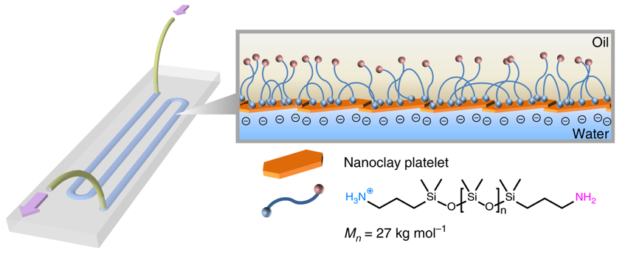
Foundry scientists have 3D-printed an all-liquid device that, with the click of a button, can be repeatedly reconfigured on demand to serve a wide range of applications – from making battery materials to screening drug candidates.
“What we demonstrated is remarkable. Our 3D-printed device can be programmed to carry out multistep, complex chemical reactions on demand,” said Brett Helms, Foundry scientist who led the study. “What’s even more amazing is that this versatile platform can be reconfigured to efficiently and precisely combine molecules to form very specific products, such as organic battery materials.”
The study’s findings, which were reported in the journal Nature Communications, is the latest in a series of experiments at Berkeley Lab that fabricate all-liquid materials with a 3D printer.
To make the 3D-printable fluidic device, the team designed a specially patterned glass substrate. When two liquids – one containing nanoscale clay particles, another containing polymer particles – are printed onto the substrate, they come together at the interface of the two liquids and within milliseconds form a very thin channel or tube about 1 millimeter in diameter.
Once the channels are formed, catalysts can be placed in different channels of the device. The user can then 3D-print bridges between channels, connecting them so that a chemical flowing through them encounters catalysts in a specific order, setting off a cascade of chemical reactions to make specific chemical compounds. And when controlled by a computer, this complex process can be automated to execute tasks associated with catalyst placement, build liquid bridges within the device, and run reaction sequences needed to make molecules.
The multitasking device can also be programmed to function like an artificial circulatory system that separates molecules flowing through the channel and automatically removes unwanted byproducts while it continues to print a sequence of bridges to specific catalysts, and carry out the steps of chemical synthesis.
The researchers next plan to electrify the walls of the device using conductive nanoparticles to expand the types of reactions that can be explored. “With our technique, we think it should also be possible to create all-liquid circuitry, fuel cells, and even batteries,” said Helms. “It’s been really exciting for our team to combine fluidics and flow chemistry in a way that is both user-friendly and user-programmable.”

